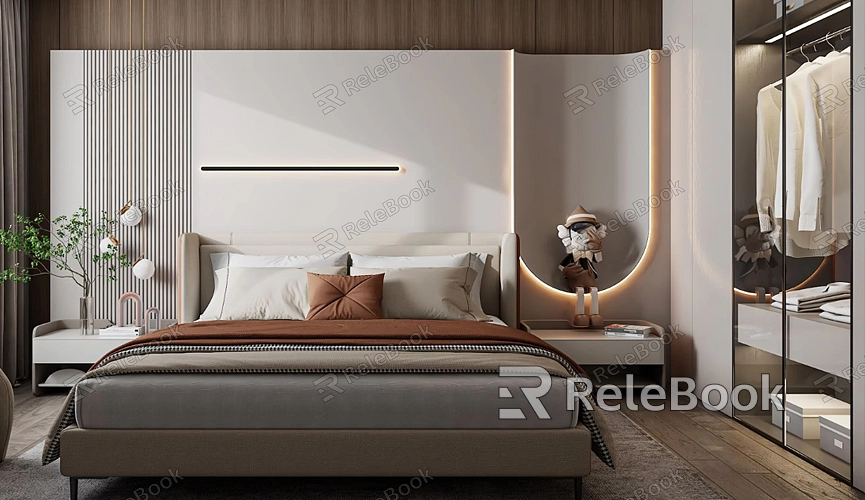What are the Types of 3D Modeling?

Polygonal Modeling
Polygonal modeling is one of the most commonly used techniques in 3D modeling. It involves creating 3D objects by defining their surfaces with polygons, usually triangles or quadrilaterals. This method is favored for its flexibility and control, making it suitable for creating complex shapes and detailed models.
1. Applications: Polygonal modeling is widely used in game development, animation, and film production. It allows artists to create detailed characters, environments, and objects that can be manipulated and animated.
2. Advantages: It provides a high level of detail and is relatively easy to learn and use. It also offers great control over the shape and texture of the model.
3. Disadvantages: Polygonal models can become complex and unwieldy with high detail levels, leading to increased computational demands.
NURBS Modeling
NURBS, or Non-Uniform Rational B-Splines, is a mathematical modeling technique used to create smooth curves and surfaces. Unlike polygonal modeling, NURBS modeling is based on curves and mathematical functions rather than polygons.
1. Applications: NURBS is often used in automotive design, aerospace, and industrial design where smooth, curved surfaces are essential. It is also used in high-end animation and visual effects.
2. Advantages: NURBS allows for precise control over curves and surfaces, making it ideal for creating complex and smooth shapes. It is particularly useful for modeling organic shapes and surfaces with a high degree of smoothness.
3. Disadvantages: NURBS modeling can be more complex to learn and use compared to polygonal modeling. It can also be less intuitive when dealing with highly detailed or intricate models.

Subdivision Surface Modeling
Subdivision surface modeling is a technique that combines the features of polygonal and NURBS modeling. It involves starting with a low-resolution polygonal model and then subdividing the surfaces to create a smoother, more detailed model.
1. Applications: This technique is commonly used in animation and film production character modeling to create smooth, high-quality models with complex shapes.
2. Advantages: It allows artists to work with a lower-resolution base model while still achieving high levels of detail and smoothness. It is also relatively easy to modify and refine.
3. Disadvantages: The subdivision process can add to the computational load, making it necessary to carefully manage the model's complexity.
Sculpting
3D sculpting is a technique that mimics traditional sculpting but in a environment. It involves manipulating a clay-like material to shape and refine the model, often using various brushes and tools.
1. Applications: Sculpting is widely used in character design, creature creation, and other artistic applications requiring intricate detail and organic shapes.
2. Advantages: It allows for a high degree of artistic expression and detail, making it ideal for creating complex and intricate models with organic shapes.
3. Disadvantages: Sculpting can be computationally intensive and may require significant hardware resources. It can also be less suitable for creating hard surface models or models with precise geometric requirements.
Procedural Modeling
Procedural modeling is a technique that uses algorithms and mathematical functions to generate 3D models. Rather than manually modeling the geometry, procedural modeling relies on parameters and rules to create complex structures.
1. Applications: This technique is often used in generating terrains, architectural models, and other repetitive or highly detailed structures. It is also used in simulations and generative design.
2. Advantages: Procedural modeling allows for the creation of highly complex and detailed models with relatively little manual effort. It also enables easy adjustments and variations through parameter changes.
3. Disadvantages: It can be challenging to control and predict the results, especially for artists who are used to manual modeling techniques.
FAQ
What is the best type of 3D modeling for beginners?
Polygonal modeling is generally considered the best starting point for beginners due to its straightforward approach and flexibility. It is widely used and supported in many 3D modeling software applications.
Can NURBS modeling be used for game design?
While NURBS modeling is excellent for creating smooth and precise curves, it is less commonly used in game design compared to polygonal modeling due to its complexity and performance considerations for real-time applications.
Is sculpting suitable for hard surface modeling?
Sculpting is primarily used for organic shapes and detailed textures. For hard surface modeling, techniques like polygonal modeling or subdivision surface modeling are usually preferred.
How does procedural modeling differ from traditional modeling techniques?
Procedural modeling relies on algorithms and rules to generate models, offering high flexibility and complexity with minimal manual effort. Traditional modeling techniques involve manual manipulation of geometry and may provide more direct control over the model’s details.
What are the benefits of using subdivision surface modeling?
Subdivision surface modeling allows for the creation of smooth, high-quality models from a low-resolution base. It provides a good balance between detail and computational efficiency, making it suitable for character modeling and animation.

